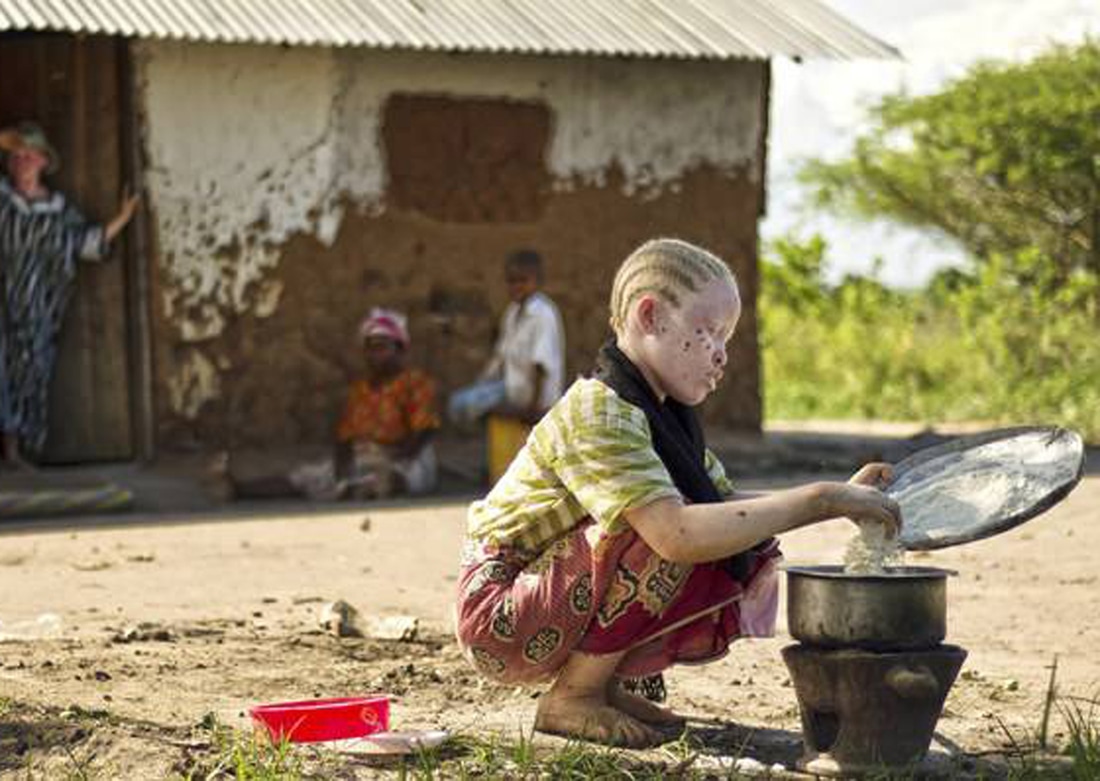curator's noteFor the final MUBIVIEWS of the summer, our writers to consider Vic Sarin’s THE BOY FROM GEITA (2014), a harrowing documentary that examines albinism within Tanzanian culture and the people that are persecuted because of it. DEATH OF THE AUTHORSUMMER MANNINGTHE BOY FROM GEITA (Vic Sarin 2014) features testimonials from people with albinism who have suffered persecution and physical violence. In the documentary, the eponymous boy, Adam Robert and a Tanzanian woman named Mariamu Staford both describe how they were mutilated. The audience later learn that this was part of the barbaric industry of witchdoctors using albino body parts to create strong potions which superstition dictates will bring luck and wealth. The director intended to build tension by cutting between Adam and Mariamu’s stories, however this is disorienting for the viewer. While the editing of the piece causes confusion throughout, it is especially prevalent in the recreations of the violence. Recreated scenes are used to present the events that Adam and Mariamu describe, such as point of view shots of an attacker with a weapon walking through a house which are intertwined with the narration. As the editing quickly cuts between them, it becomes increasingly difficult to understand the nuances of the individual stories. While Sarin perhaps chose this technique to illustrate the similarities between the stories, it is ineffective and may have had a bolder impact had the interviews been shown one after the other as it would make more sense to the audience. THE BOY FROM GEITA suffers from issues with editing from the beginning. Key figures are suddenly introduced and each simply begin by talking, with little initial explanation as to who they are or where they fit within the narrative. It is detrimental to the film that the details of each person’s significance are revealed gradually. This is unconventional for a documentary and off-putting as it defies audience expectation of the genre in a jarring fashion. Sarin’s reasoning for making those editing choices no longer matters when the final product is delivered to the audience, as we all take our own interpretations from the text. Attempting to evoke sympathy, THE BOY FROM GEITA’s illogical editing style only manages to confuse its viewer. Every day this week a different writer will provide their perspective on our MUBIVIEWS film and each post will be open to comments from our readers. Watch THE BOY FROM GEITA on mubi.com until 13 July 2017 and join the discussion!
0 Comments
Your comment will be posted after it is approved.
Leave a Reply. |
MUBIVIEWSOne MUBI film, five perspectives, endless possibilities. Archives
July 2017
Categories
All
|



 RSS Feed
RSS Feed
